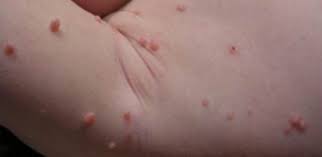
CDC Reports Stabilisation in STI Rates After Two Decades of Increase
New findings from the Centers for Disease Control and Prevention (CDC) indicate that the longstanding rise in sexually transmitted infections (STIs) in the United States may finally be slowing. After more than two decades of steady increases, recent data reveals declines in some key STI rates, including a second consecutive year of reduced gonorrhea cases and a substantial slowing in the growth of syphilis infections. The report, which underscores both positive trends and remaining challenges, suggests that recent preventive efforts and public health strategies are beginning to show impact.
The CDC’s findings show that gonorrhea cases dropped by 7% in 2023, marking a return to pre-pandemic levels. Syphilis cases, while still on the rise, increased by only 1%—a notable reduction after years of double-digit growth. This slight decline in STI growth rates offers cautious optimism that public health interventions are gaining traction.
“I see a glimmer of hope amidst millions of STIs,” remarked Dr. Jonathan Mermin, director of the CDC’s National Center for HIV, Viral Hepatitis, STD, and TB Prevention. He added that, after two decades of increases, the current trends indicate a turning point and stressed the importance of sustained investment and innovative solutions to maintain momentum in reducing infections.
Despite these improvements, STIs remain a significant health issue across the country. According to the CDC’s report, STI cases remain elevated compared to 20 years ago, with over a million additional cases reported annually in 2023. Congenital syphilis continues to impact newborns significantly, with nearly 4,000 cases diagnosed last year.
Though there was a 3% rise in newborn syphilis cases, the rate is a marked improvement from previous years, when annual increases hovered around 30%. Additionally, in certain parts of the United States, the increase in congenital syphilis cases appears to be slowing, which researchers view as another positive development.
Notably, the report also highlights progress among other vulnerable groups. Cases of primary and secondary syphilis—the most infectious stages—fell by 10% in 2023, marking the first substantial decline in more than two decades. Among gay and bisexual men, a key population group in syphilis transmission, cases declined by 13%, the first decrease in this demographic since the CDC began monitoring trends among them in the mid-2000s.
The CDC attributes these shifts to recent advancements in STI prevention and care, including expanded guidelines that recommend using doxycycline as a preventive treatment following exposure to certain bacterial STIs. Another key development has been the approval of at-home tests for syphilis, gonorrhea, and chlamydia, which makes early detection more accessible. In addition, the launch of a federally coordinated task force targeting syphilis has strengthened response efforts nationwide, with a particular emphasis on preventing congenital syphilis.
While these findings mark encouraging progress, the CDC stresses that the fight against STIs is far from over. Continued development of targeted prevention, testing, and treatment options will be essential, particularly in underserved communities that are most affected by these infections.
Furthermore, expanding access to local STI services will be critical to sustaining the downward trend in STI rates and supporting improved health outcomes for all at risk.